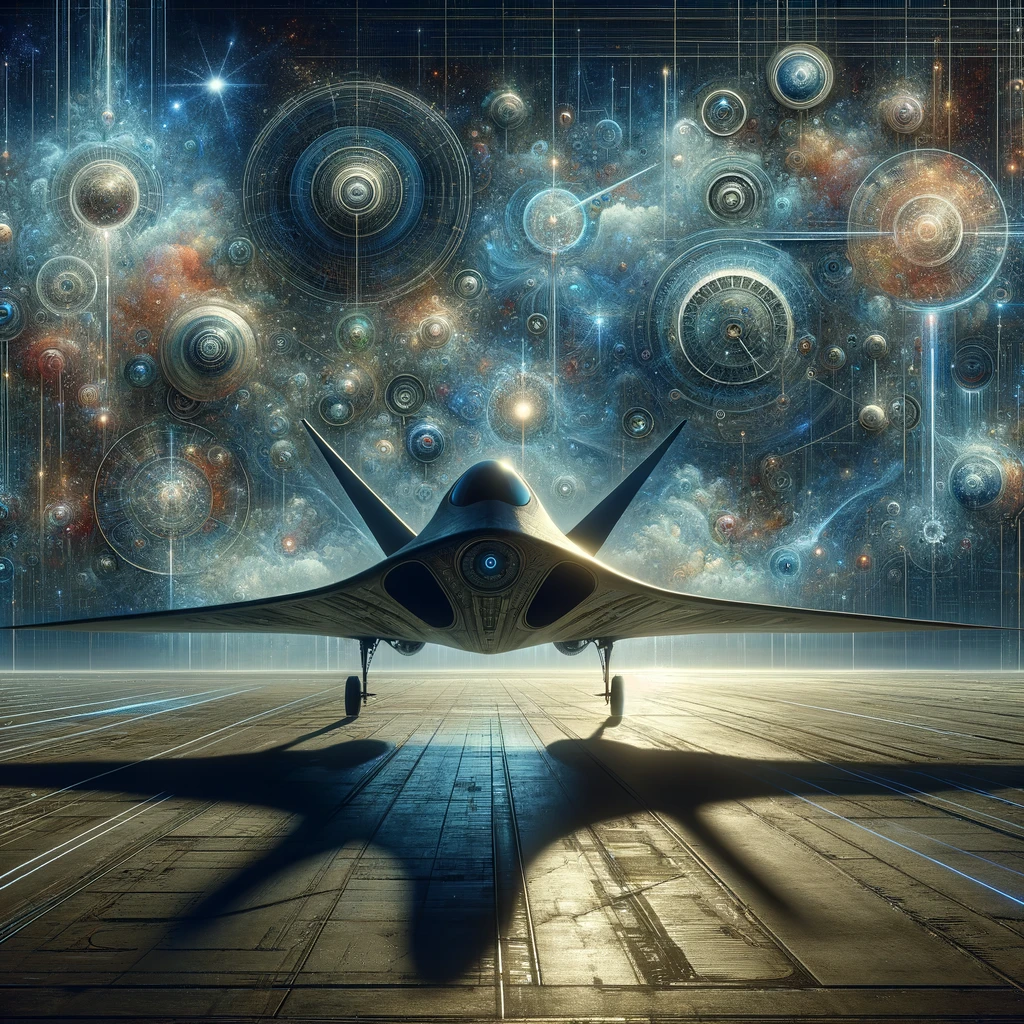The Convergence of Military Innovation and UAP-Inspired Technology

In a world where the boundaries of science fiction and reality blur, the whispers of advanced technology derived from unidentified aerial phenomena (UAPs) or UFOs grow louder, though never confirmed outright.
By detailing advancements and theoretical designs that seem to leapfrog over the evolutionary steps of terrestrial technology, these presentations serve as a veiled acknowledgment, a soft disclosure, of the real-world application of extraterrestrial innovations. The discussions around materials that morph on command, structures that integrate multiple functions into a singular, seamless entity, and vehicles that exhibit unprecedented adaptability and responsiveness, all but whisper the unsaid truth: that humanity may be on the precipice of embracing technology not born of this Earth. This veiled revelation, nestled within the context of speculative future aircraft designs, nudges the audience towards the realization that the marvels of alien technology, long the subject of speculation and fantasy, might already be within our grasp, subtly disclosed through the guise of human ingenuity.
The veil of secrecy that shrouds the origins of such groundbreaking scientific and technological advancements stirs a cauldron of intrigue and speculation. Companies like Lockheed Martin, Northrop Grumman, BAE Systems and EG&G stand at the forefront of this technological vanguard, rumored to have reverse-engineered technologies from non-human intelligences. This clandestine acquisition raises profound ethical questions about the bargains struck in the shadows for such knowledge, the human assets compromised, and the moral implications of such exchanges.
The opaque decisions surrounding the patenting of these technologies, the selection of contractors to profit from them, and the extent of their disclosure to the international community are shrouded in mystery, fueling debates on geopolitical stability and human security. As these defense contractors navigate the murky waters of UAP technology, the lack of transparency and public engagement raises concerns about the true extent of human advancement and the potential societal benefits lost in the pursuit of secrecy.
The tantalizing hints of meta-materials with the ability to “change structure on command,” akin to a “muscular material,” suggest a leap in aerospace engineering that transcends conventional understanding. Such materials, reminiscent of descriptions from historical UFO crash sites, hint at the existence of intact crafts or fragments thereof, harboring secrets of a potentially extraterrestrial origin.
The concept of integrating disparate airplane components into a single, holistic, and adaptable design, as hinted at by a Lockheed Martin employee, resonates deeply with descriptions often attributed to unidentified flying objects (UFOs). This innovative approach to aircraft design mirrors the reputed capabilities of UFOs, which are said to exhibit a seamless, unified structure, lacking the distinct, modular components typical of human-made aircraft. The idea that an aircraft could morph its shape to optimize performance across different flight conditions echoes longstanding reports of UFOs effortlessly maneuvering through the skies with unparalleled agility, capable of sudden direction changes, incredible speeds, and even seemingly defying the laws of physics as we understand them.
UFO sightings often describe craft that possess an almost otherworldly ability to adapt to their surroundings, moving through the air, and sometimes water, with no visible means of propulsion or traditional aerodynamic structures like wings or jets. This adaptability suggests a technology far beyond our current capabilities, where the entire structure of the craft functions in unison, without the clear-cut separations between propulsion, control, and other systems found in our aircraft.
The Lockheed Martin employee’s description of an aircraft with integrated systems, where even the skin can contain sensors, energy storage, and possibly even contribute to the craft’s propulsion, mirrors this concept. It suggests a future where our technology might not just mimic the appearance of UFOs but also adopt the underlying principles that make them so extraordinary: a truly unified design, where every part of the craft contributes to its overall function, allowing for a level of adaptability and efficiency that current aerospace technology cannot achieve.
This vision of future aircraft design, inspired by the holistic nature of UFOs, challenges the conventional compartmentalization of aerospace engineering. It proposes a paradigm where the aircraft is not just a collection of parts assembled together but a cohesive organism, with each component designed to work in concert with the others, dynamically responding to the demands of its environment. Such a design philosophy represents a significant leap towards achieving the kind of technological marvels that UFOs have long been rumored to possess, bringing us one step closer to unraveling the mysteries of advanced aerospace technologies that have captivated the human imagination for decades.
Yet, the promise of these innovations remains locked away, confined to “black projects” and inaccessible to the broader scientific community. The call for UAP transparency grows louder, fueled by the belief that the shared exploration of these technologies could usher in a new era of human prosperity. However, as long as these advancements remain ensconced within the halls of defense contractors, the world is left to wonder about the full extent of what has been discovered and the future that could be if such knowledge were freely shared.


